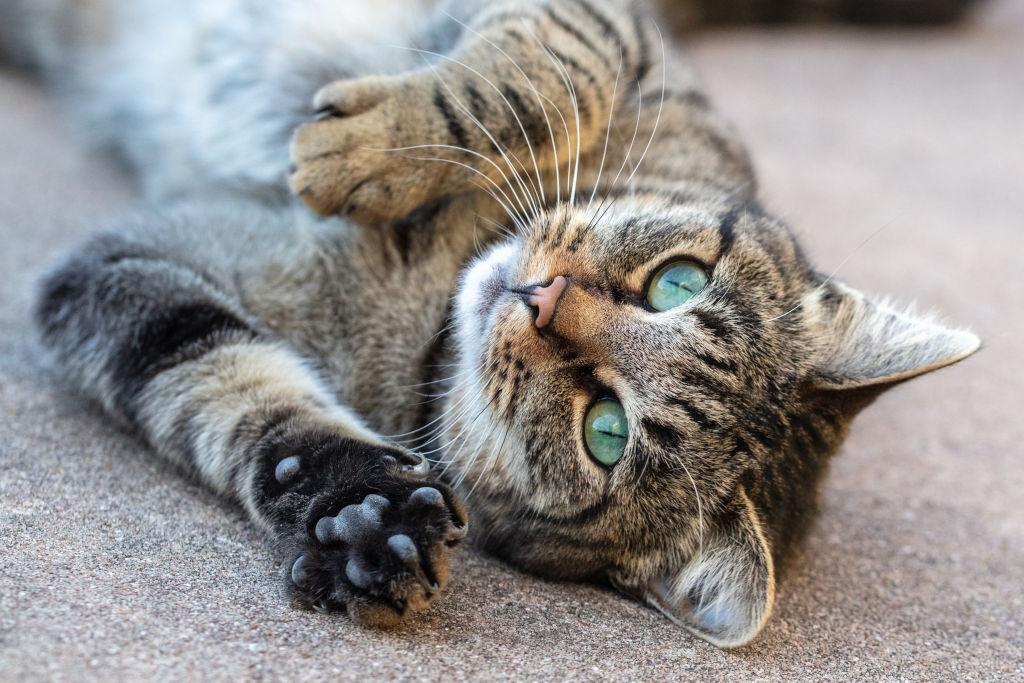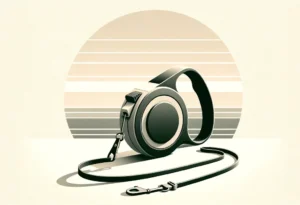Disclosure: We may earn a commission from helpful, relevant links in our content. No cost to you. See our privacy policy.
Are your cat’s claws always getting snagged? Let’s uncover the reasons and solutions for this feline predicament.
Keep reading for a comprehensive guide on why this happens, how to help your feline friend, and debunking common myths about cat claws.

Why Do Cats’ Claws Get Stuck?
Cats’ claws have a unique structure that serves multiple purposes, including climbing, hunting, and self-defense. They are curved and retractable, allowing them to remain sharp and avoid wear when not in use.
However, this design can lead to their claws getting stuck, particularly in fabrics or textured surfaces. This usually happens when a cat is trying to climb or grip something, and the curvature of their claws causes them to hook onto the material.
Does It Hurt When a Cat’s Claw Gets Stuck?
When a cat’s claw gets stuck, it can cause varying degrees of discomfort.
Usually, it’s a minor annoyance, not painful, since claws are designed to withstand stress. But if the cat struggles or pulls forcefully, it may cause pain or injury.
It’s essential to observe your cat’s behavior and body language to determine the level of discomfort they might be experiencing, and approach the situation calmly to avoid causing further stress.
What to Do When They Get Stuck
When your cat’s claw gets stuck, it’s essential to remain calm and handle the situation gently.
Start by slowly moving towards your cat and speaking to them softly to reassure them. Then, hold your cat’s paw with one hand and use your other hand to support the material or surface their claw is stuck in.
Gently press the cat’s paw pad to extend the claw, then carefully unhook it from the material without yanking or pulling. If the claw is tightly stuck or your cat is too agitated, you may need to seek help from a veterinarian.
Signs of Injury from a Stuck Claw
While a stuck claw usually causes minor discomfort, it’s important to recognize signs of injury in case your cat needs medical attention. Be vigilant for the following symptoms:
- Limping or favoring one paw
- Excessive licking or biting of the affected paw
- Swelling or redness around the claw or paw
- Visible damage or bleeding around the claw
- Unusual vocalizations or signs of distress when touching the paw
- Reluctance to play or engage in normal activities
If you notice any of these signs, consult your veterinarian promptly for a proper assessment and treatment. Early intervention can help prevent complications and ensure your cat’s well-being.
Preventing Claws From Getting Stuck in the Future
Taking proactive steps can help minimize the chances of your cat’s claws getting caught. Let’s explore some effective measures to keep your feline friend safe and comfortable.
Regularly trim your cat’s claws
Keeping their claws trimmed will minimize the chances of them getting snagged.
Using dedicated cat nail clippers or a guillotine-style clipper, trim your cat’s claws every 2-3 weeks to maintain a safe length and prevent snagging. Avoid cutting the quick, the sensitive area inside the claw.
If you’re unsure about trimming, consult your veterinarian or a professional groomer. Note that declawing is not a humane option and is strongly discouraged by animal welfare organizations.

Provide appropriate scratching surfaces
Provide your cat with sisal, cardboard, or carpet scratching posts or pads to maintain their claws and satisfy their instincts. Providing suitable surfaces for your cat to scratch also reduces the risk of damage to your furniture and other household items.
Sisal scratching posts, such as the SmartCat Ultimate Scratching Post or PetFusion 3-Sided Vertical Cat Scratcher, are popular for their durability and appeal to cats.
Avoid getting a short scratching post, as cats need a tall, sturdy surface to stretch and scratch effectively. Look for posts at least 30 inches tall to accommodate your cat’s needs.
Cat-proof your home
Create a safe and cat-friendly environment by securing loose fabrics or materials, such as curtains or rugs with long fibers. Additional tips for cat-proofing your home include:
- Use cord protectors or cable organizers to keep electrical cords out of your cat’s reach.
- Place delicate or fragile items in closed cabinets or out of your cat’s reach.
- Secure loose fabric items, such as curtains or rugs, by using hooks, tiebacks, or slip-resistant pads.
- Avoid using loosely woven or looped fabrics for upholstery, as they are more prone to snagging.
Consider claw caps
If your cat’s claws continue to get stuck, you can try applying claw caps. These soft, plastic caps cover the tips of the claws and can prevent them from catching on surfaces.
Claw caps like Soft Claws or Kitty Caps can be a temporary solution to prevent claw snags.
However, it’s essential to be aware of their drawbacks. Claw caps need to be replaced every 4-6 weeks, and some cats may not tolerate them well. Additionally, cats with claw caps should be indoor-only, as the caps can hinder their ability to defend themselves or escape danger outdoors.
Consult your veterinarian before using claw caps to ensure they’re a suitable option for your cat.
Myths and Misconceptions About Cat Claws
Cats’ claws are an essential part of their anatomy, and with that comes a handful of myths and misconceptions. Let’s debunk some common misunderstandings to help cat owners make well-informed decisions about their feline friends’ claw care.
Myth 1: Declawing is a simple, harmless procedure.
Fact: Declawing is not a mere nail trim. It’s a surgical procedure that involves the amputation of the last bone in each of the cat’s toes. It can cause long-term pain, discomfort, and behavioral changes. Many countries and animal welfare organizations strongly discourage declawing due to its inhumane nature.
Myth 2: Cats need to scratch furniture to sharpen their claws.
Fact: Cats scratch to mark their territory, stretch their muscles, and shed the outer layers of their claws. Providing appropriate scratching surfaces, like sisal or cardboard scratchers, can redirect their scratching behavior away from furniture.
Myth 3: Cats can’t retract their claws completely.
Fact: Cats have a unique ability to extend and retract their claws. They usually keep their claws retracted when resting, walking, or playing, extending them only when necessary for gripping, climbing, or self-defense.
Myth 4: Outdoor cats don’t need their claws trimmed.
Fact: While outdoor cats may naturally wear down their claws through daily activities, it’s still essential to monitor their claw health. Overgrown claws can cause discomfort or become ingrown, which may lead to infections or other complications. Regular claw maintenance is crucial for both indoor and outdoor cats.
By dispelling these common myths and misconceptions, cat owners can better understand their pets’ needs and ensure their claws are well-maintained and healthy.
FAQs
Can a cat’s claw get infected if it’s stuck for too long?
A cat’s claw can become infected if it’s stuck for too long, as the stress on the claw may cause injury, creating an entry point for bacteria.
How do I know if my cat’s claw is broken or injured?
Signs of a broken or injured claw include limping, excessive licking of the paw, swelling, redness, and visible damage or bleeding around the claw.
Can a cat’s claw grow back if it’s been pulled out?
If a cat’s claw is pulled out but the root remains intact, the claw can grow back over time. However, if the root is damaged, regrowth may be limited or impossible.
Alex, a passionate animal lover, has experience in training and understanding animal behavior. As a proud pet parent to two dogs and three cats, he founded AnimalReport.net to share insights from animal experts and expand his knowledge of the animal kingdom.




